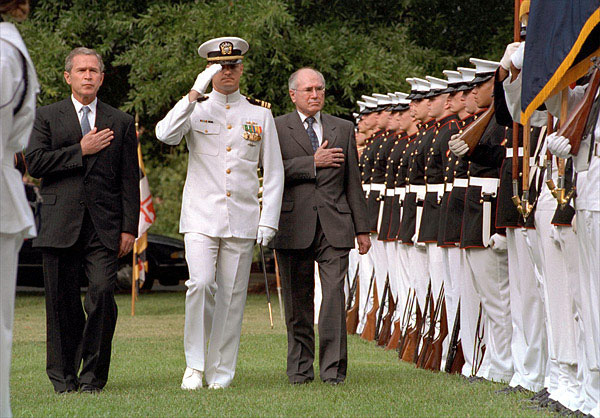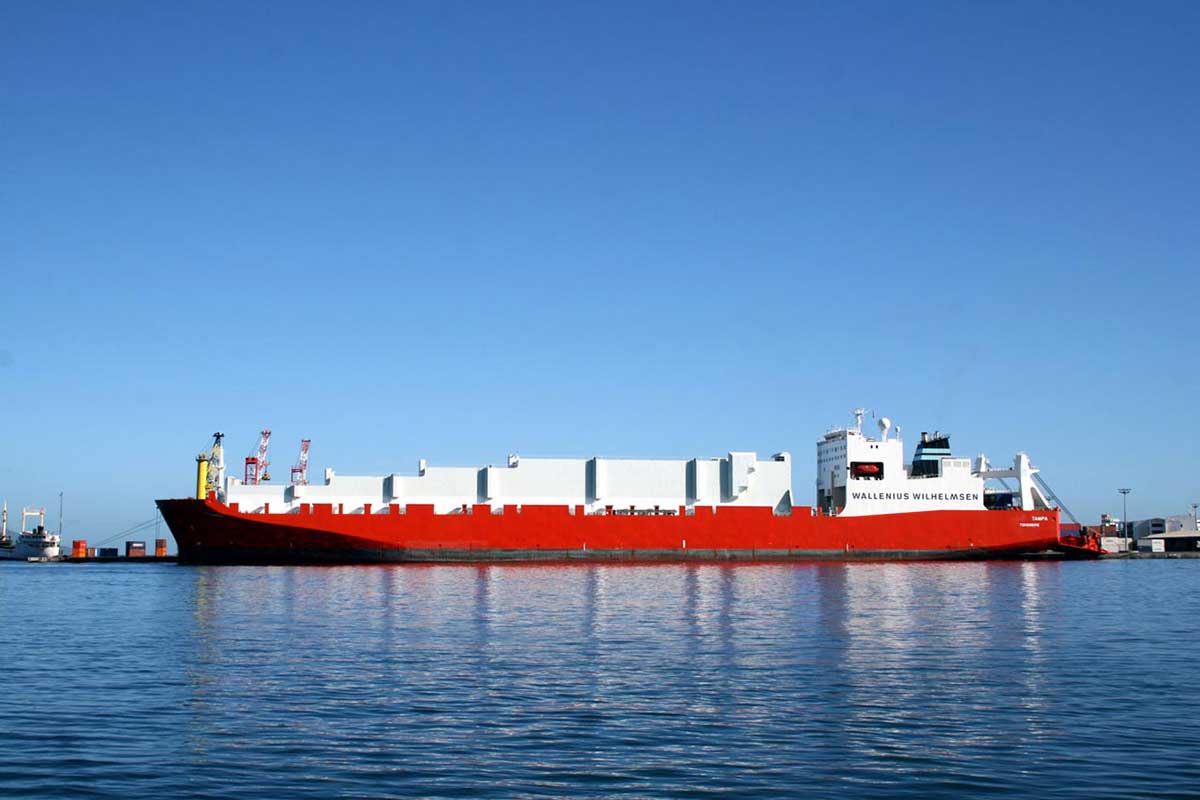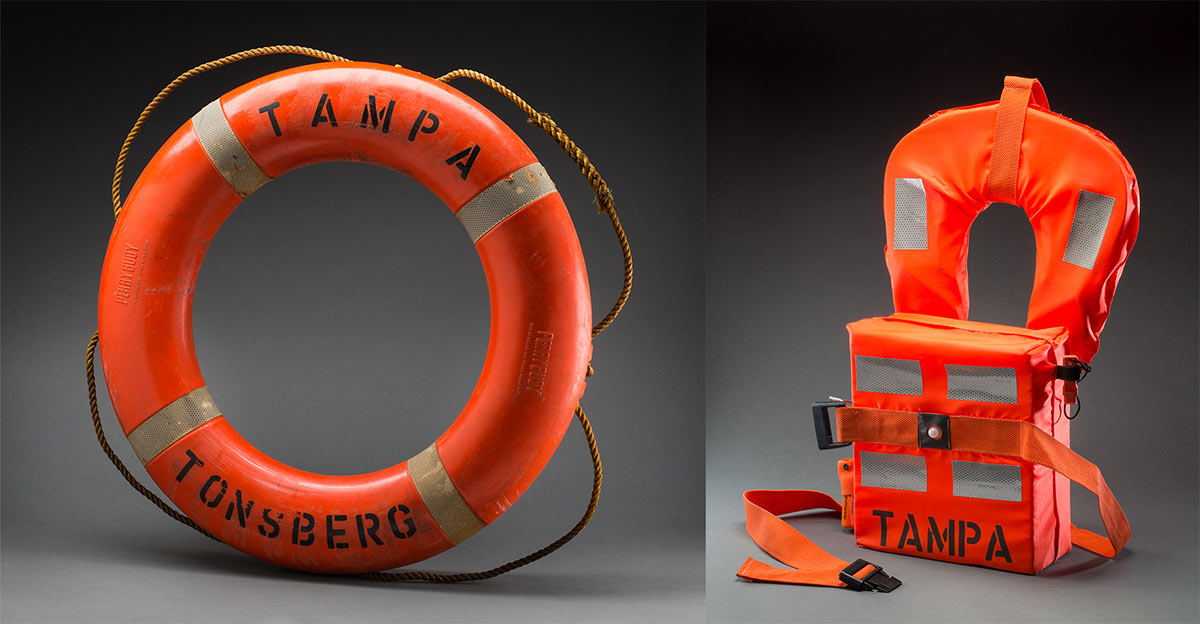In August 2001 Australian troops boarded the Norwegian freighter MV Tampa off Christmas Island.
The commander of the vessel, Captain Arne Rinnan, had rescued hundreds of asylum-seekers from a stranded Indonesian fishing boat in the Indian Ocean and was attempting to bring them to Australia.
The ‘Tampa Crisis’ became the catalyst for Australia’s new ‘border protection’ policy. It also became a pivotal issue in the 2001 federal election campaign.
United Nations High Commissioner for Refugees, 2006:
No one knows how many boat people have died, but thousands have been rescued at sea. In the reality of dangerous journeys undertaken to gain access to reluctant coastal states, the time-honoured maritime traditions of rescue at sea collide with the growing determination of states to prevent illegal entry to their territory.
Eight days of drama
On 24 August 2001 the Palapa, a small Indonesian fishing boat overloaded with 433 mainly Hazara asylum-seekers from Afghanistan, became stranded in international waters about 140 kilometres north of Christmas Island.
The asylum-seekers were rescued by the Norwegian container ship, the MV Tampa, under direction by the Australian Maritime Safety Authority.
The Tampa’s captain, Arne Rinnan, then set course for the Indonesian city of Merak, the closest port with facilities to dock such a large vessel. However, some of those rescued threatened to commit suicide if they were returned to Indonesia. Others entered the ship’s bridge, and told Rinnan to take them to Christmas Island.
However, the Australian Government refused to allow the Tampa to land any of the asylum-seekers. Prime Minister John Howard said, ‘I believe it is in Australia’s national interest that we draw a line on what is increasingly becoming an uncontrollable number of illegal arrivals in this country.'
Many of the asylum-seekers on board the ship were in poor health. Over 48 hours Rinnan made repeated requests to Australian authorities for assistance. These requests were acknowledged but not acted on, so Rinnan decided to enter Australian waters.
The ship crossed the Australian maritime boundary on 29 August 2001, shortly before midday. Australian authorities advised Rinnan that he was in ‘flagrant breach’ of the law, and the Government dispatched 45 Special Air Service (SAS) troops to board the ship and prevent it from sailing any closer to Christmas Island.

Government’s response and the Pacific Solution
On the same day Prime Minister Howard tabled the Border Protection Bill 2001 in parliament.
If passed, the Bill would have provided the government with the power to remove any foreign ship in Australian territorial waters.
It was backdated to give retrospective authority for the boarding of the Tampa, and ensured that no Australian court could review the actions or directions of an Australian military officer.
The Bill was criticised for the breadth of powers it would confer and on 30 August 2001 it was voted down in the Opposition-dominated Senate.
By 2 September 2001 the government had hastily secured agreements with Nauru and New Zealand. The Royal Australian Navy then took the Tampa’s asylum-seekers to Nauru from where 131 of them were sent to New Zealand. The remaining 302 were processed on Nauru over coming months (though a handful remained there for three years).
In the aftermath of the ‘Tampa Crisis’ the government passed a series of laws that created a new legislative framework for handling asylum-seekers known as the ‘Pacific Solution’. This included the excision of many of Australia’s offshore islands, including Christmas Island, from Australia’s migration zone.
This meant that asylum-seekers had no automatic right to apply for refugee status if they arrived on these islands.
The Pacific Solution also meant that asylum-seekers could be processed offshore, in places like Nauru and Papua New Guinea’s Manus Island. The Labor Opposition did not oppose these measures.
The Australian Government’s handling of the Tampa affair and implementation of the Pacific Solution attracted international criticism. However, in the six years from 2002, 23 boats arrived in Australia compared to 43 carrying more than 5,000 asylum-seekers in 2001 alone.
The government stated that the implementation of its immigration policy was saving lives by discouraging people from setting sail for Australia in unseaworthy boats.
Political impact of the Tampa affair
Only eight days elapsed from the first sighting of the Palapa to finalisation of the Government’s arrangement with neighbouring countries, yet the ‘Tampa Affair’ had an enduring impact on Australian politics.
On 11 September 2001 terrorists destroyed the World Trade Center in New York City, killing 2,996 people of whom 11 were Australian. Prime Minister Howard was in Washington DC at the time and immediately committed Australia to assisting America. This led to Australia’s involvement in the wars in Iraq and Afghanistan.
The federal election campaign started less than a month later on 8 October 2001 and was dominated by questions of border protection and national security. It was during this campaign that Howard made the statement, ‘… we will decide who comes to this country and the circumstances in which they come’.
For most of 2001 the Howard government had lagged behind Labor in the opinion polls and few thought they could retain government in the upcoming election. However, because of his actions during and after the Tampa affair and the 9/11 terrorist attacks, Howard came to be seen by many as a strong leader.
On 10 November 2001 Howard's Liberal–National coalition was returned to power with a three per cent increase in votes.
In our collection
Explore Defining Moments
You may also like
References
Interview with Arne Rinnan, SBS News
Prime Minister John Howard’s 2001 election speech
Senate Select Committee Report into maritime incident
Tony Kevin, A Certain Maritime Incident: The Sinking of SIEV X, Scribe Publications, Melbourne, 2004.
Robert Manne, ‘From Tampa to 9/11: Seventeen days that changed Australia’, in Martin Crotty and David Andrew Roberts, Turning Points in Australian History, UNSW Press, Sydney, 2009.
Peter Mares, Borderline: Australia’s Treatment of Refugees and Asylum-seekers, UNSW Press, Sydney, 2001.

